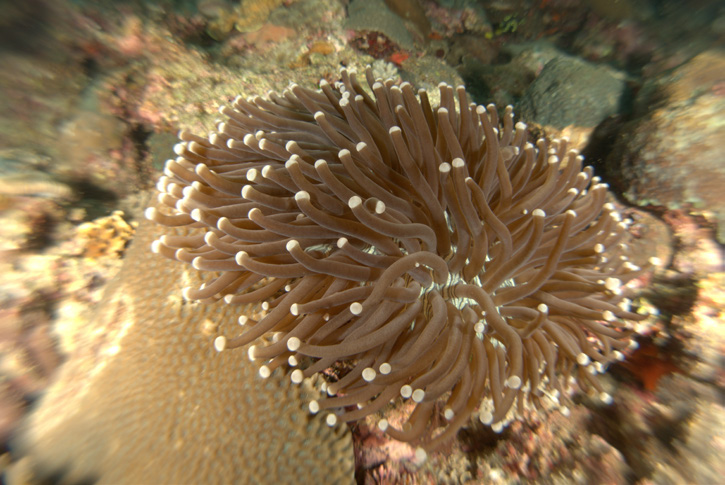Let’s Start with the Undeniable: Our Beaches are Beautiful
And it’s not just the shore that’s a sight for sore eyes either. And as with any beautiful thing, there’s more beneath the surface.
Photography is among the many arts that has thrived as it shows what lies beneath the surface of the Philippines’ many breathtaking beaches. Its popularity as art, profession, and pastime are rising in popularity, and the once tiny niche of underwater photography has risen apace with the help of technology and yielded hundreds of gorgeous underwater photos, allowing the number of hobbyist-divers to increase as well.
One such hobbyist-diver, Manila Bulletin’s Jayvee Fernandez, likens the diving experience to space travel. “In principle, the two activities aren’t [all that different]. They’re both about exploring alien worlds and they both require floating in a space.”
Corals certainly contribute to the feeling of being in an alien space, and their popularity in the aquarium hobby has suddenly risen. But as Animal Scene’s advocacy is to encourage responsible interaction with animals of all kinds, we asked him to talk to us about interactions with these sea creatures.
ANIMAL SCENE (AS): HOW POPULAR HAS DIVING BECOME, PARTICULARLY IN THE PHILIPPINES?
Jayvee Fernandez (JF): If you’re a Filipino touring Europe or other parts of Asia, you’ll [want to drink in] the sights—the Eiffel Tower, the Great Wall, the Pyramids, etc. The same can be said of foreign tourists that fly to the Philippines, and many of them, mostly British and French, skip Manila altogether. They end up [spending] months in Palawan, Cebu, Dumaguete Puerto Galera or even nearby Anilao just to go scuba diving. And in the Philippines, it’s scuba season all year round!
AS: WHAT WOULD YOU SAY FRUSTRATES YOU MOST ABOUT THIS PURSUIT?
JF: The Philippines is at the center of the coral triangle, so its biodiversity is quite impressive. As Filipinos who mostly live in the city, we don’t realize that we have this gift. Many foreigners often joke that the weird thing about Filipinos is that we don’t know how to swim and that we stay [on the shore] and hardly go into the water. I’ve often said that as a people we need to rediscover our heritage as island dwellers with an affinity towards the ocean.
“I guess like any hobby, it’s not as easy as being able to play basketball, because from Manila, the closest place you can go to dive would be 2-3 hours away. Yes, you can definitely make a day trip, but I honestly wish I lived closer to the ocean. I envy my friends in Cebu who are literally minutes away from diving. I hear that right after clocking out from work, they proceed to the dive shop for a quick shore dive.
To be completely fair, that does sound like a great time!
Dive Responsibly

Maybe you’ll want to start diving—and who can blame you? The thing to remember, though, is this: treat the ocean depths both like a strange new country, and like the world above the shore. Respectively, the living things under the sea are not like us, and they’re just as affected by the changes wrought by human presence and/or interference.
Jayvee elaborates, “As a hotspot for diving and underwater photography we get a lot of irresponsible divers who tend to stress the natural flora and fauna. [Usually] it is through careless diving, such as feet hitting the corals, or bad photography habits, like stressing a critter to make it exhibit a particular behavior for the camera…”
On the subject of corals, it is vital for both your health and that of the coral that you don’t touch it. Think of it this way: you wouldn’t spend possibly hundreds of years growing into this big, beautiful, fishy apartment complex just for some human to step on you. In any case, you don’t know what manner of stinging thing might be living in there.
But ultimately, stepping on corals causes long-term damage, and we need them intact. Tropical storms and wave action have less of an impact on coastlines because corals can often take the brunt of the pressure. It’s also important for scientists that marine life get to keep their natural environment and way of life so that accurate research can be conducted, and this includes the nitrogen levels that corals provide and regulate for sea creatures. They’re a whole ecosystem on their own, and we’d do well not to disrupt them.
In this case, the best thing to do is to learn as much as you can about responsible diving.
This appeared in Animal Scene magazine’s July 2017 issue.






